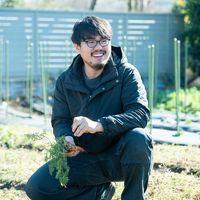-
応募プロジェクト・アイデアのタイトル
サーキュラーエコノミー型CSA
-
応募プロジェクト・アイデアのタイトル(英語)
CIRCUULAR ECONOMY CSA
-
応募プロジェクト・アイデア紹介動画URL(5分以内)
-
応募プロジェクト・アイデアの説明
なぜ生ごみを堆肥化するのか。私は、生ごみを焼却処分する際の助燃 剤(重油)の使用に不自然さを感じているから、と答えています。生ごみの含水率は95〜98%です。ということは、ほぼ水のような生ごみを燃やすために、遠い異国 の地から助燃剤を運んでいる事になります。 生ごみ1tを燃やすには760lの助燃剤が使用され、CO2が20 50kg排出されます。この不自然さに対して、地元の農家が市民を巻き込んで、主体的に生ごみ堆肥化に参画する取り組みが、サーキュラーエコノミー型CSAです。 参加者にとっては、可燃ごみの減量によるごみ処理費の節約、新鮮で美味しい野菜が手に入る、防災機能性(コンポストトイレ)等の利点があります。農家は肥料を賄え、かつ安定的な野菜販売につながるので、市場価格に左右されず、 生活が安定する等の利点がある。
-
応募プロジェクト・アイデアの説明(英語)
Why do we compost food waste? My answer is that I feel the use of fuel oil in the incineration of food waste is unnatural. The water content of food waste is 95-98%. This means that in order to burn raw garbage, which is almost like water, we are transporting fuel additives from a distant foreign country. In order to burn 1 ton of raw garbage, 760 liters of fuel additives are used and 2,050 kg of CO2 is emitted. At a unit price of 82.3 yen per barrel of crude oil, this means that 600 billion yen of taxpayer money is spent annually on incineration. In response to this unnatural situation, a circular economy-type CSA is an initiative in which local farmers involve citizens and proactively participate in food waste composting. For the participants, there are advantages such as saving on waste disposal costs by reducing the amount of combustible waste, obtaining fresh and tasty vegetables, and disaster prevention functionality (composting toilet). For farmers, there are advantages such as stable livelihood as they can provide fertilizer and stable vegetable sales, which are not affected by market prices.
Translated with www.DeepL.com/Translator (free version) -
応募プロジェクト・アイデアの詳細説明
【IDEAS FOR GOOD(プロジェクトが生まれたストーリーについて)】
https://ideasforgood.jp/2020/09/28/kamoshidajun-yasuiakihiro-circulareconomy-compost/
【日本経済新聞(サーキュラーエコノミーCSAについて)】
https://www.nikkei.com/article/DGXZQOGH0911S0Z00C21A7000000/ -
応募プロジェクト・アイデアの詳細説明(英語)
[IDEAS FOR GOOD (about the story of how the project came about)
https://ideasforgood.jp/2020/09/28/kamoshidajun-yasuiakihiro-circulareconomy-compost/
Nihon Keizai Shimbun (about the Circular Economy CSA)]
https://www.nikkei.com/article/DGXZQOGH0911S0Z00C21A7000000/ -
応募プロジェクト・アイデアのWebサイトがありましたら、URLをご記入ください。
https://www.facebook.com/groups/425161345241413
- 374
サーキュラーエコノミー型CSA
CSAとは、農家と消費者が年間契約を結び、購入する農産物の代⾦を前払いすることで農業を支
援するシステムです。多くのCSAは、「farm to table(農場から食卓へ)」だけで、関係性が一方通⾏になりがちです。私は、これに「table to farm(食卓から農場へ)」の流れも加え、
相互通⾏の関係性をつくりたいと考えています。すなわち、各家庭で1次処理した生ごみを農場で堆
肥化し、それで野菜を栽培して、また食卓に届ける取り組みです。
消費者にとっては、可燃ごみの減量によるごみ処理費の節約、新鮮で美味しい野菜が手に入る等の
利点があります。農家は肥料を賄え、かつ安定的な野菜販売につながるので、市場価格に左右されず、
生活が安定する等の利点があります。
援するシステムです。多くのCSAは、「farm to table(農場から食卓へ)」だけで、関係性が一方通⾏になりがちです。私は、これに「table to farm(食卓から農場へ)」の流れも加え、
相互通⾏の関係性をつくりたいと考えています。すなわち、各家庭で1次処理した生ごみを農場で堆
肥化し、それで野菜を栽培して、また食卓に届ける取り組みです。
消費者にとっては、可燃ごみの減量によるごみ処理費の節約、新鮮で美味しい野菜が手に入る等の
利点があります。農家は肥料を賄え、かつ安定的な野菜販売につながるので、市場価格に左右されず、
生活が安定する等の利点があります。


